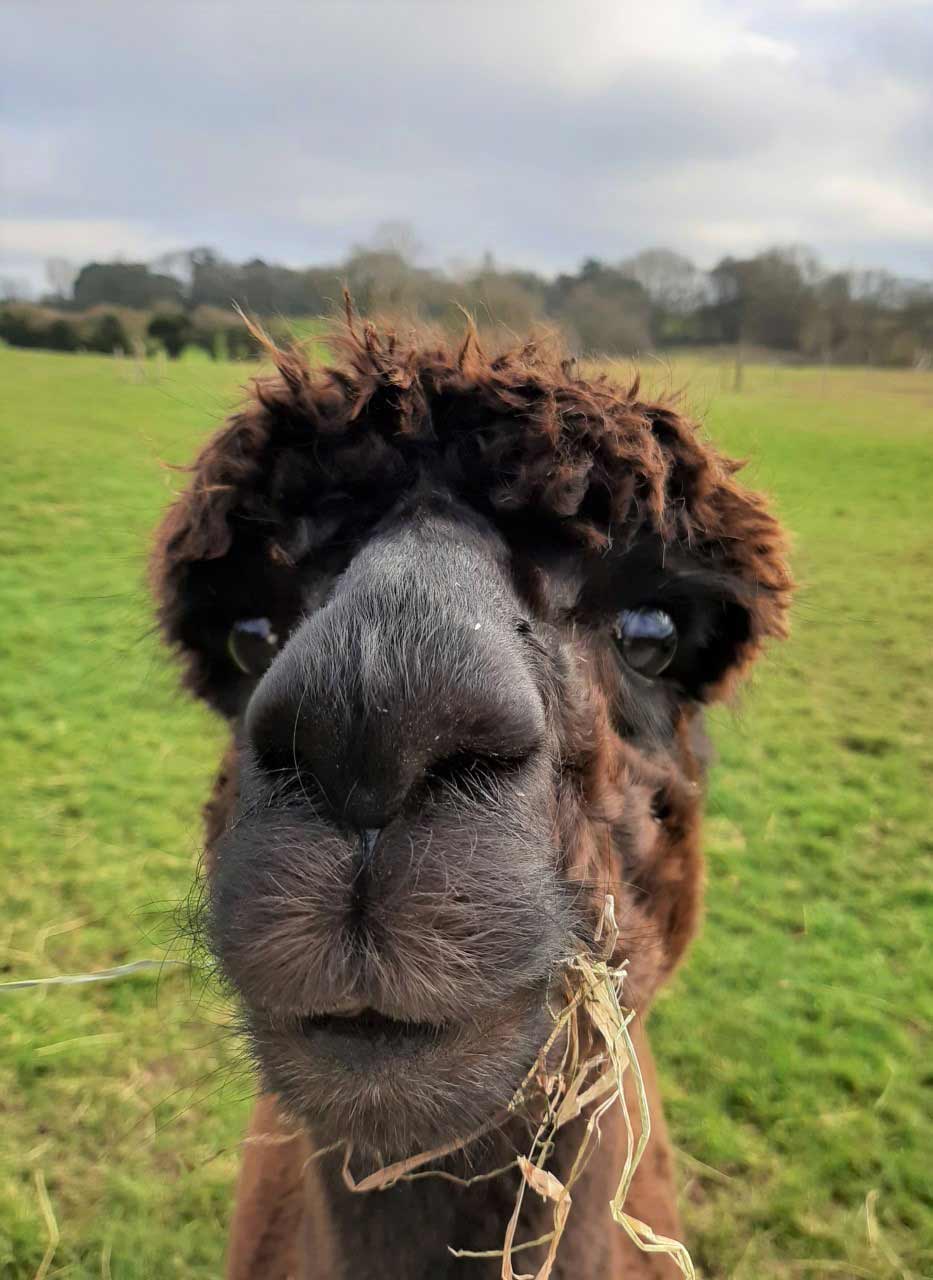 Alpacas are very special animals. They are intelligent, inquisitive and gentle herd animals and each one has an individual personality. However it is their fibre, known simply as "alpaca" that is the really special thing about them. Alpaca is used in the fashion industry to make fine garments and is known for it's luxurious properties. It competes alongside cashmere, angora and merino in this market. Alpaca is also used increasingly for more practical purposes in the leisure / active wear industry and it is this use that particularly interests us.
Alpacas are very special animals. They are intelligent, inquisitive and gentle herd animals and each one has an individual personality. However it is their fibre, known simply as "alpaca" that is the really special thing about them. Alpaca is used in the fashion industry to make fine garments and is known for it's luxurious properties. It competes alongside cashmere, angora and merino in this market. Alpaca is also used increasingly for more practical purposes in the leisure / active wear industry and it is this use that particularly interests us.
Alpaca is warm, strong, soft, hypoallergenic, odour repellent, temperature regulating and sustainable. If you search the internet there are numerous claims about alpaca being warmer and lighter than Merino, environmentally friendly, wrinkle resistant, resistant to “bobbling” and even resistant to solar radiation!
It is easy to find people from the alpaca industry who will tell you about the many virtues of alpaca. It isn’t quite so easy to find the same amount of hard scientific evidence, published in established journals, on some of these claims. But to give just a summary of the scientific evidence available on the qualities of the fibre would ignore some of the fascinating history of alpacas or what can be learnt from simply observing them at close quarters. Here we look at some of the alpaca fibre claims and offer our own thoughts on what makes alpaca special.
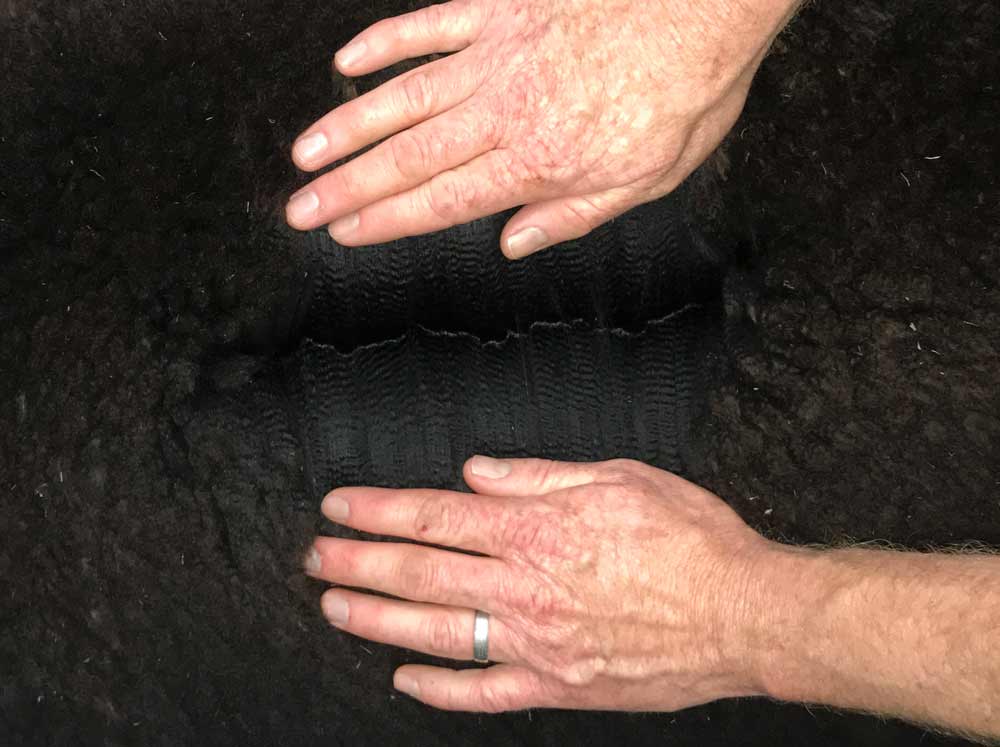 Softer
SofterSoftness of fibre or wool usually depends on how fine it is. Fineness is measured in microns (one thousandth of a millimetre). Anything that is lower than 20 microns will feel very soft. When comparing fibres / wool under a microscope you can see that the outer cuticle cells look a little like scales. Alpaca is special because alpaca fibre scales lie flatter to the fibre shaft than those of similar fibres. Sheep’s wool protrudes roughly twice as high (as shown in the image below). This means for the same fineness of fibre, alpaca feels much softer. These flatter scales are also behind the claim that alpaca does not “pill” or “bobble” to the same extent as other fibres. The suggestion is that the scales do not interlock or catch on each other as much.
|
Alpaca |
Sheeps Wool |
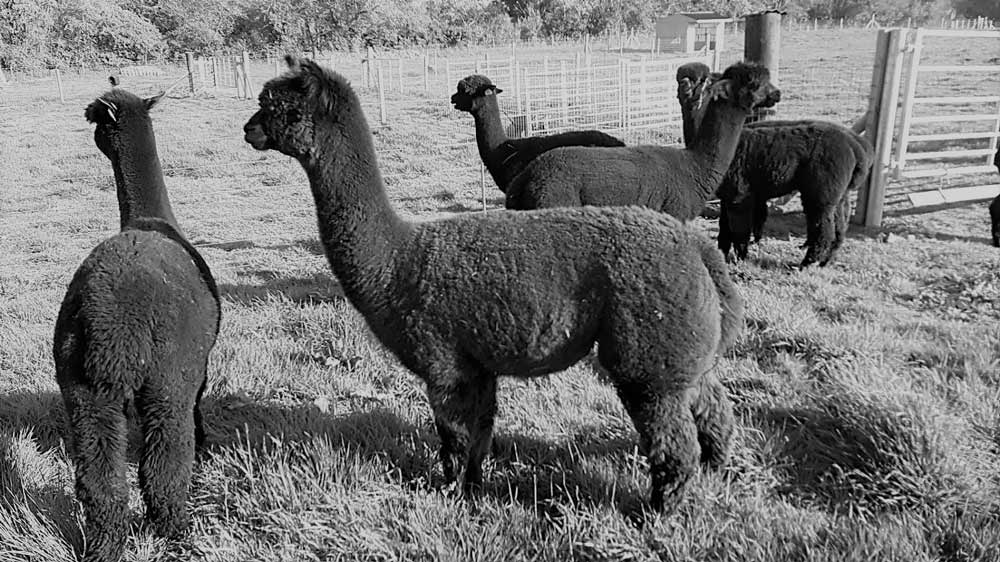 Warmer and lighter
Warmer and lighterMany people believe alpaca to be warmer and lighter than Merino wool. Some claim it to be as much as five times warmer due to the pockets of air in individual alpaca fibres. While there is a growing amount of evidence for both of these claims, there is not yet conclusive proof. How light and warm a garment is will depend largely on how it is constructed. The point to take home here is that merino wool and other natural fibres such a cashmere and angora are all super-warm and light, but alpaca may well be the warmest and lightest!
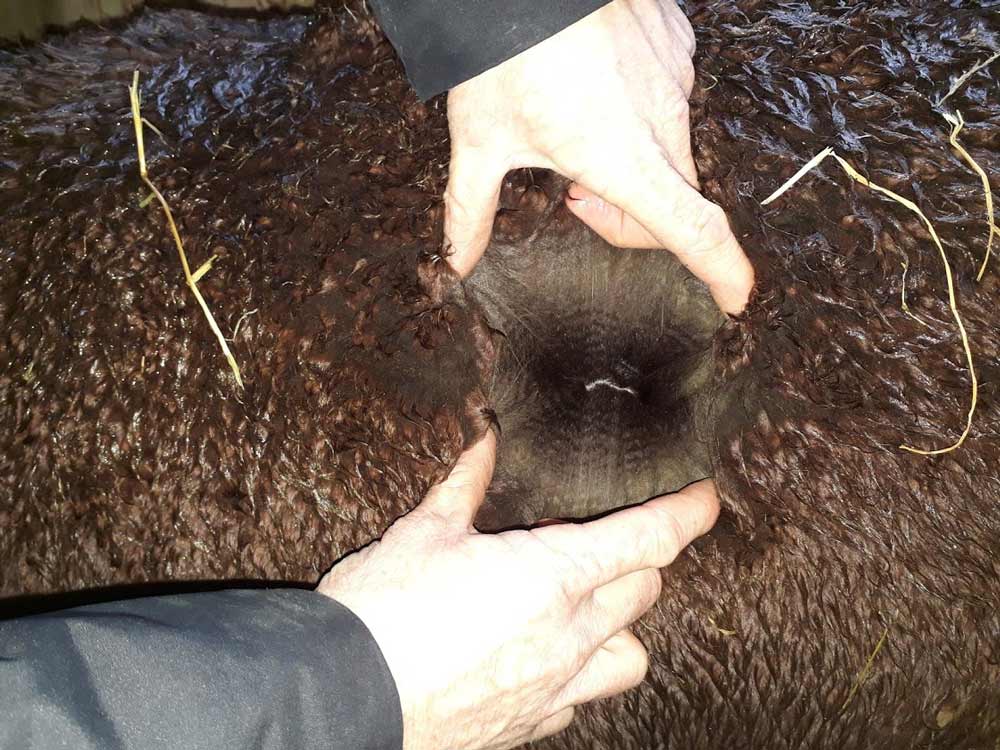 Water repellent
Water repellentAlpaca isn’t water proof. It is known, like other natural fibres, to absorb a certain amount of water or moisture from the atmosphere. What is special here is perhaps best seen on alpacas in real life. Rain will dampen their outer fibres, but if you look closely you will see water droplets running off them. And if you get very close and gently pull back the fibre, it is dry underneath the top layers. You may see an alpaca out in the rain in the UK. But don’t worry. It is not getting as wet as you might think!
That alpaca fibre does absorb some moisture is what enables it to wick moisture. It absorbs moisture from the skin and then lets that moisture evaporate in to the environment. What is special about alpaca is that it is thought to only absorb around 10-15% of it’s weight. Around half that of sheep’s wool. Which means that alpaca shouldn’t get as heavy as wool when it is wet, but will still wick moisture effectively. Synthetic materials only absorb around 2% of their weight in moisture, meaning they can get clingy and cold when there is a lot of moisture around.
Natural fibres are well known to help you stay warm in cold weather and also cooler in warm weather. If you have ever sweated in a synthetic fleece you will be familiar with the unpleasant feeling that the locked in moisture can bring. In the warm it can make you hotter and in the cold, the moisture makes you colder. The special ability alpaca has to wick moisture- but not hold on to too much of it before effectively evaporating- means you stay cooler when it is warm and warmer when it is cool.
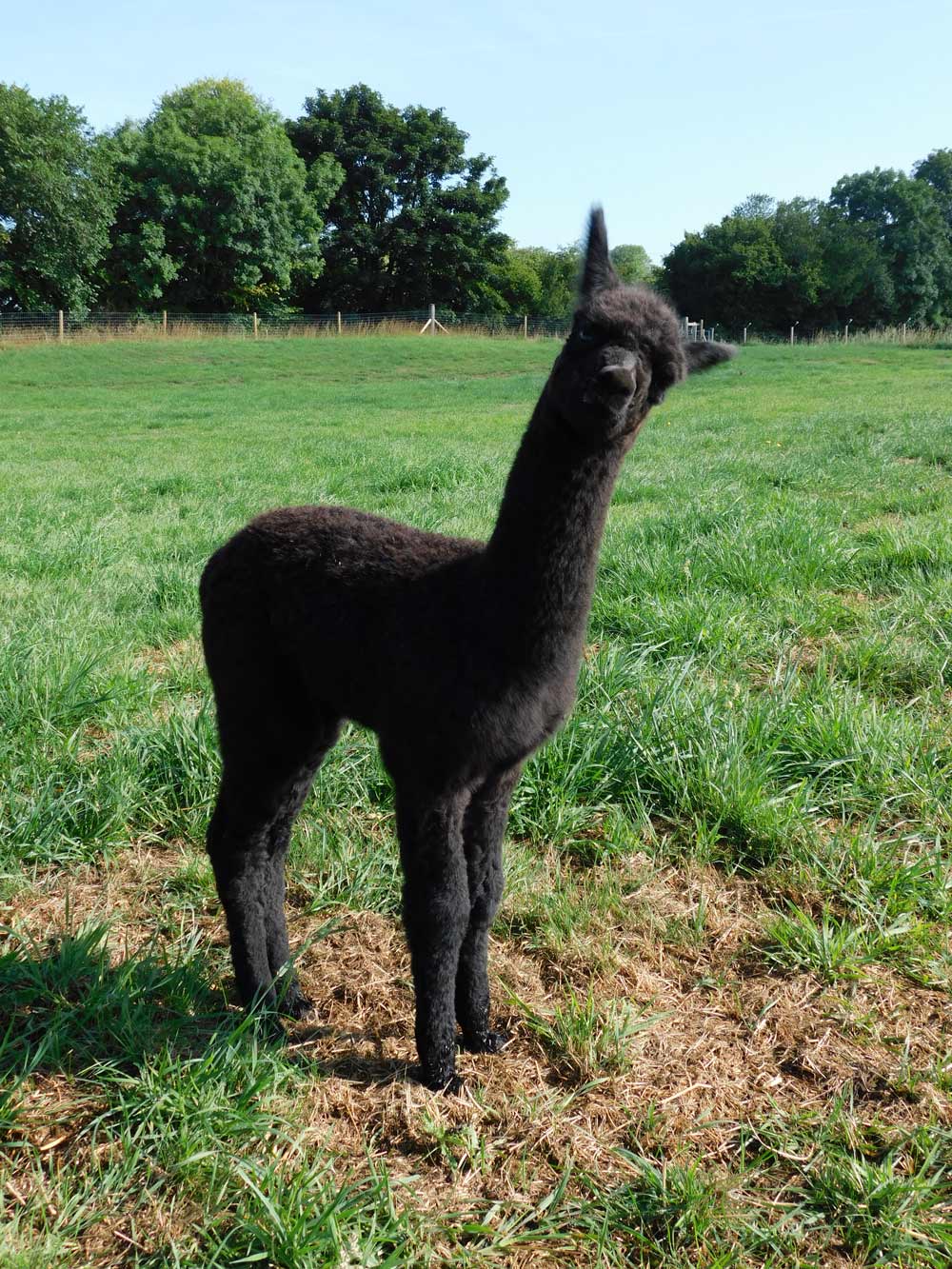 Hypoallergenic
HypoallergenicHypoallergenic means to provoke fewer allergic reactions in allergy sufferers. This is the case with alpaca fibre for two reasons. Firstly, most alpaca made clothing is made of fibre below 30 microns. It is at 30 microns and above that human skin will feel the “prickle” of wool/fibre. Added to this is the softness factor of alpaca explained above. In short you are less likely to be irritated by alpaca fibre than other wool/fibre.
The second reason is that alpaca has much less lanolin than sheep’s wool and some people are allergic to lanolin.
You could put on an item of clothing made of alpaca and think it is itchy. But it would be explained by either having some very coarse alpaca fibre in it (not all alpaca is super fine!) or being blended with another material that is 30 microns or above.
It is moisture that allows bacteria to thrive and therefore smells to develop. As alpaca does not hold on to a great deal of moisture and is so effective at enabling it to evaporate away, alpaca is more resistant to odours than many materials. This claim is best tested out for yourself!
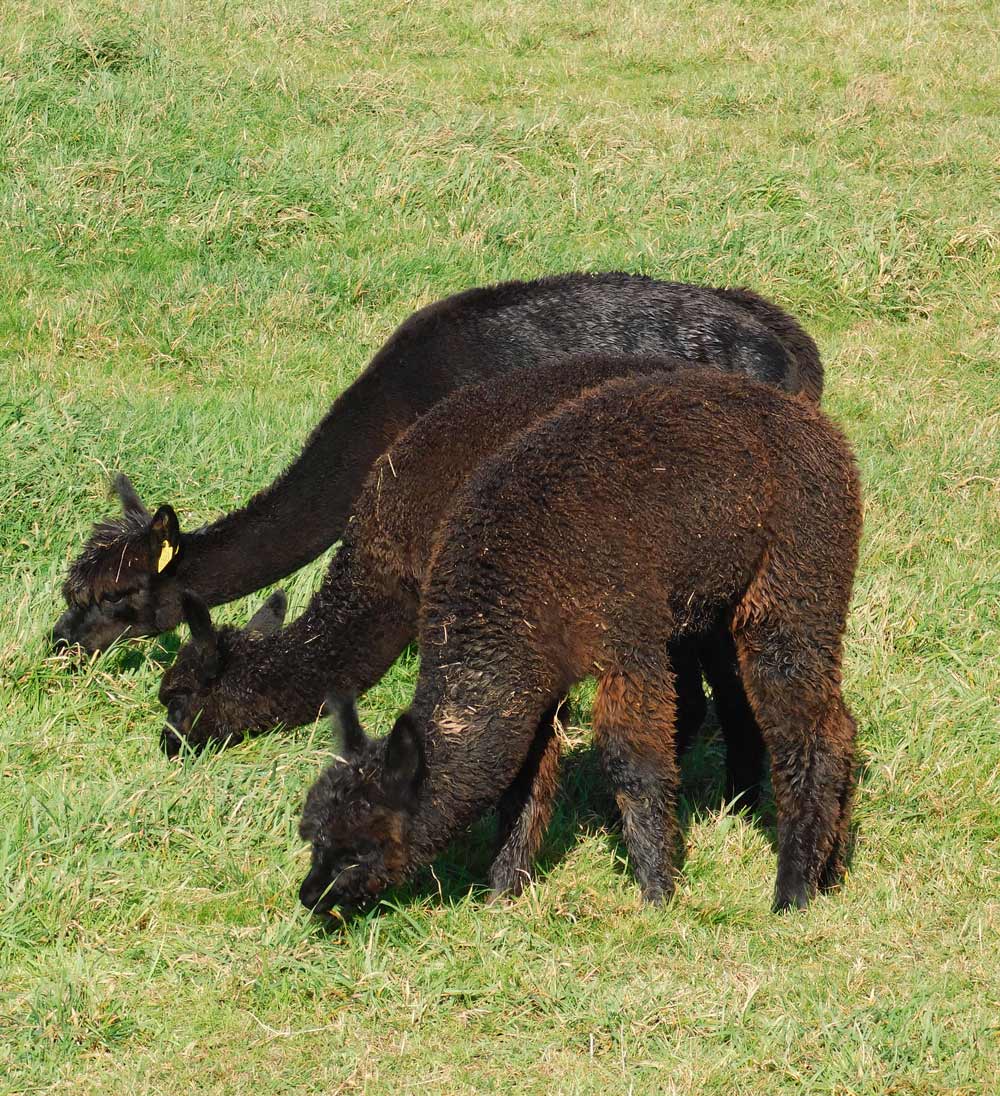 Sustainable & environmentally friendly
Sustainable & environmentally friendly